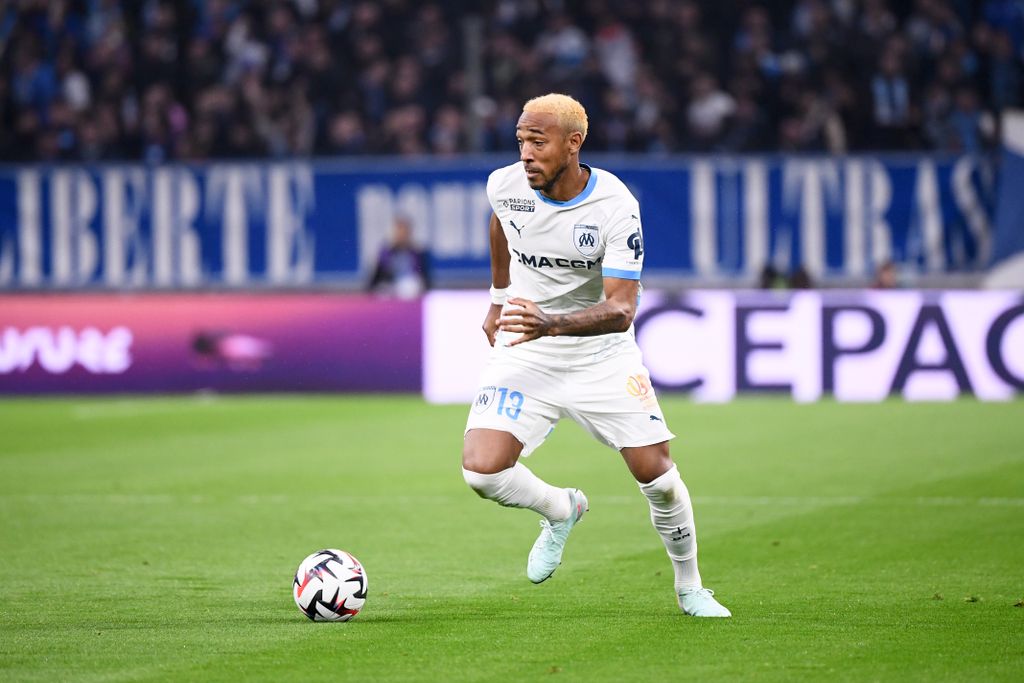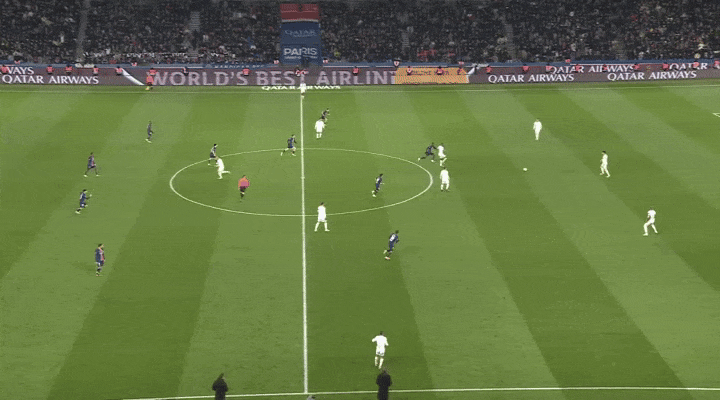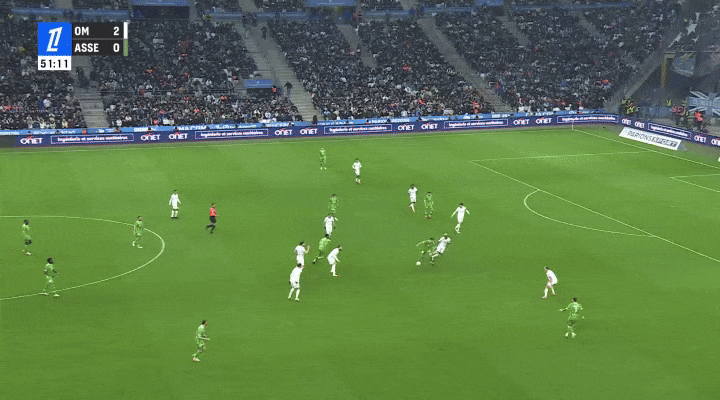THE BREAKDOWN: Derek Cornelius's evolution at Marseille as CanMNT CB ponders move

Could Derek Cornelius be the latest CanMNT player to be on the move amid a busy summer of transfers for Canadians?
Not only has Cornelius recently been linked to a potential exit from Olympique de Marseille, but the 27-year-old centre back was also an unused substitute in their first game of the Ligue 1 season, a 1-0 loss to Stade Rennais.
In that game, new Marseille arrival CJ Egan-Riley started ahead of him, joining Leonardo Balerdi and Geoffrey Kondogbia in a back three, which was a surprise to see given that Cornelius was the third-most used Marseille centre back behind Balerdi and Kondogbia last season.
With Egan-Riley’s arrival, as well as the loan to bring in Facundo Medina from Lens, it appears those moves have pushed Cornelius down the pecking order slightly despite a solid debut season in France from the Canadian.
To be fair, Marseille's depth is not a bad thing for Cornelius. As the Canadian centre back showed last year, where he managed to quietly climb Marseille’s depth chart and earn over 1500 minutes despite being signed as more of a backup, he has no problem competing for his place in the team.
Plus, with Marseille set to return to the Champions League after finishing second place in Ligue 1 last year, there will be plenty of opportunities for rotation in Marseille’s backline, especially as the season goes on.
Given how he was able to adapt to head coach Roberto De Zerbi’s system, Cornelius seems like a player Marseille would be wise to keep in the fold, as he could be valuable as they navigate a busy campaign.
At the same time, there are reasons why Cornelius might want to find a new opportunity.
Namely, the big one is the World Cup. With that tournament coming next summer, Cornelius will want to be as fit and in form as possible, as he’s expected to start alongside Moïse Bombito at the back for the CanMNT throughout that World Cup. 
Having appeared in 17 out of 21 games Canada has played under head coach Jesse Marsch, he’s become an extremely trusted member of that Canadian backline, and for good reason, as his aggression and intelligence are exactly what Marsch wants to see from his defenders.
To that point, his numbers under Marsch speak for themselves - he’s averaged 6.06 interceptions and 9.44 recoveries per game under Marsch, along with 14.17 duels (winning 53% of them), which is not bad at all.
Now, though, he faces competition for his starting spot with Canada from Luc De Fougerolles, as the young Canadian centre back had a big summer for Canada and has since hit the ground running on loan to FCV Dender in the Belgian top flight. He remains in tough to displace Cornelius, but given the potential he’s shown glimpses of, he has every opportunity to win a spot over the next 10 months - Jesse Marsch even told the Athletic’s Joshua Kloke this week that De Fougerolles is already their third-choice centre back behind Bombito and Cornelius, and that he's going to "compete for a starting spot".
Fittingly, in that conversation with the Athletic, Marsch also mentioned that in a recent visit to Marseille, he spoke with Cornelius about his spot in the Canadian team, and that Cornelius is now weighing up whether he should stay to fight for a spot at Marseille, or head out to a new club on loan or via a transfer, as he looks to maintain his starting place on a Canadian team where Marsch views him as a “really important guy.”
Now, the big question if he leaves is simple - where would he go? One would have to imagine a club within the top five leagues would make the most sense - for example, he’s been linked to Serie A side Bologna and La Liga side CD Alavés in recent weeks. In particular, the former would be interesting given that they’re participating in the Europa League in 2025/2026 after playing in the Champions League last year, while the latter have spent nine of the last 10 seasons in La Liga and are not a bad alternative option.
🇪🇸🔵⚪️ EXCL - Alavès & l’Olympique de Marseille sont en discussions pour Derek Cornelius.
— Sacha Tavolieri (@sachatavolieri) August 20, 2025
🇩🇰 Un départ est autorisé par l’OM en cas d’offre intéressante avoisinant les €4M.
💰 Le salaire imposant de Cornelius pourrait constitué un obstacle mais des discussions sont en cours… pic.twitter.com/uSqp6NhpSx
With reports suggesting Cornelius will be available for somewhere around double (or slightly less) the 2.8 million Euros fee that Marseille paid for him last summer, there should be plenty of suitors at that price throughout the top five leagues, so it’s hard to imagine Bologna and Alavés are the only clubs looking at him, even if they appear to lead the race. With his style of play, Cornelius would fit nicely in tactical circuits like Italy’s Serie A or Spain’s La Liga, but he could also do well in Germany’s Bundesliga after playing in the country earlier in his career, and of course, he could stay in France at another club.
Should he make that move, however, what should potential suitors expect from Cornelius? One big thing is relative comfort on the ball - at Marseille, he was in the 98th percentile among centre backs in Europe’s top five leagues and European competitions in passes completed with 87.63 per 90, and was in the 98th percentile for his pass completion rate with 93.9% (via FBRef). ![[fb Charts] Derek Cornelius](https://storage.googleapis.com/canpl/assets/df393364-eaa6-4743-8723-6bda6ac45b41.png)
Here's how Cornelius's stats compared to all centre backs in the top five leagues plus Champions League and Europa League (FBref)
Given that three of his top four statistical comparables on FBRef include Manchester City’s Rúben Dias, PSG’s Lucas Beraldo and Brighton’s Lewis Dunk, it shows how well rated his passing ability is, at least in terms of his completion rate.
To be fair, a large reason for those inflated passing statistics is due to the system he was in, as Marseille held an astonishing 63.3% of possession per game, which helped inflate his offensive numbers, but they still stand out despite that.
Cornelius's heatmap from this season with Marseille, showing how active he is on the ball (WyScout).
He wasn’t the most adventurous with his passing, to be fair - he attempted just 2.97 long balls per 90 with Marseille - but he did average 7.02 passes into the final third (at an 83.1% clip), and sent 22.87 of his passes forward compared to the 5.67 he sent backwards, so it’s not as if he was completely playing it safe, either. 
Here are Cornelius's pass maps from a couple of Marseille games; a Ligue 1 clash vs. Angers on the left, and a Ligue 1 clash vs. Toulouse on the right, giving an idea of the sort of passes he was playing in any given match (WyScout)
Plus, for what it’s worth, Marseille were last in Ligue 1 in long ball attempts, further showing that Cornelius’s lack of desire to hit long balls was more due to their system, which encourages methodical build-up play from their goalkeepers, defenders and midfielders.
Promise David was this 🤏 close to connecting on the beautiful set-up pass from Derek Cornelius. #GoldCup pic.twitter.com/85HPeAhkA1
— TSN (@TSN_Sports) June 25, 2025
That’s further shown in the fact that he attempted (and completed) just one dribble all year long - he wasn’t expected to do a lot of the ball progression for Marseille (although he did have 4.6 progressive carries per 90, which is 81st percentile on FBRef).
When using the eye test, the best way to describe Cornelius’s on-ball style is that he’s more comfortable than confident - meaning that he never looked awkward when playing on the ball, although he might not have been the most natural fit in this system. The numbers seem to back that up, too, as well as the fact that he was more of a rotation option than a nailed-on Marseille starter, given De Zerbi’s on-ball demands. 

Here are a couple of clips highlighting Cornelius's ability to pick out long balls, showing that he has that in the locker if needed (WyScout)
Of course, for a centre back, what they do on the ball is half of the picture, anyway - while it has become a huge part of the modern game, it’s important that defenders, well, defend. To be fair, Cornelius didn’t have to do as much of that at Marseille, but his numbers are still solid - he was 68th percentile in tackles won and 37th percentile in interceptions on FBRef.
Then, diving deeper into his numbers, he was pretty strong in his duels, winning 57.2% of the 10.85 duels he attempted per game, including 54.2% of the 3.19 aerial duels and 64% of the 4.64 duels he won. As seen there, his volume of duels wasn’t very high, with Marseille’s high press encouraging less defensive actions for their defenders, but those win rates are quite solid.
To that point about defensive volume, what he didn’t have in duels contested, he made up for by making 4.43 interceptions and 9.5 recoveries per game - the latter is quite important as it shows how he was able to do his job within Marseille’s press and help cut out plays.
For a better idea of the sort of aggressive defensive actions Cornelius was contesting, here are a sample of his interceptions (left) and recoveries (right) from a Ligue 1 game vs. Strasbourg where he had nine of the former and 18 of the latter in one of his strongest defensive performances (WyScout)
Plus, it’s important to note that those numbers are pretty similar to what he has had under Marsch with Canada, which is encouraging from a CanMNT perspective, as what he’s doing in that system can directly translate into what he does at the National Team. 
Here's a look at how Cornelius compared to Ligue 1 centre backs in 2024-2025 - as seen there, he was quite strong with his defenisve numbers when adjusting for Marseille's lofty possession numbers, and he was average in most of his ball progression stats (WyScout).
For what it’s worth, too, his defensive numbers with Marseille aren’t too wildly different from what they were with his old club, Malmö, either, where his all-around excellence earned him that move to Ligue 1. Granted, like with Marseille, he was on a team that dominated the ball, but across his time in the Allsvenskan, he averaged 14.85 duels per 90 (winning 65.5% of them), including 4.19 aerial duels (winning 62.8%) and 5.42 defensive duels (winning 69.4%), while also adding 4.81 interceptions and 11.94 recoveries per 90, which aren’t too different from his Marseille numbers.
Similarly, his on-ball numbers in Sweden are also strong, as he attempted 66.9 passes per 90 (at a 93.3% clip), including just 3.32 long balls, with 4.29 of his passes going to the final third (at a 77.8% clip), and 24.74 of them going forward (compared to just 2.77 going backwards), showing that he did well to translate his game from Sweden to France.
Because of all that data from his time in France, Sweden and how he’s defended for the CanMNT, it shows that any team that is looking to play a bit more front-footed style should be ecstatic to bring him in. To that point, when looking at the top possession teams in Serie A in 2024-2025, Bologna was 2nd behind Inter Milan with an average of 58.1% possession, so all of a sudden, that potential makes a lot more sense - whereas Alavés were bottom five in La Liga with just 45.3% possession, making that link a bit more surprising, although Cornelius’s defensive play could be a huge asset for a team that is on the ball less.
Between what he has done for club and country in the last few years, Cornelius has become quite familiar with systems where he’s both active on the ball and asked to defend high up the pitch, which can often be harder for defenders to learn.

An example of Cornelius's aggressive defensive approach working in a Marseille clash vs. PSG (WyScout)
That’s huge, as he was always more comfortable when sitting back and defending earlier in his career, but he’s now developed to the point where he can be trusted in multiple systems, especially those where teams want to play aggressively.
Another Cornelius clip from that PSG match, as he makes a nice step to slow down a PSG attack (WyScout)

Here's the exact sort of action Cornelius will show as a sign of what he can do on both sides of the ball, as he makes a nice tackle before pushing the play the other way (WyScout)
Yet, that shows why while a move like Bologna might make more sense for Cornelius’s current trajectory, he couldn’t go wrong with a move to Alavés, either - the work he would have to do defending would make up for the diminished ball-playing he’d do; and it’s not like the CanMNT are huge on playing out of the back, either. 
This is a tackle Jesse Marsch will be happy to see Derek Cornelius make, as he flies up the pitch to make an intervention (WyScout)

And here's another example of Cornelius's aggressive front-foot defending leading to a recovery for Marseille (WyScout)
Now, what remains to be seen is whether or not he leaves Marseille to pursue that new opportunity. As seen above, it’s not as if staying at the club is a bad option - although many might suggest otherwise after some of the drama that has emerged from the club recently, such as the documentary footage of Cornelius’s CanMNT teammate Ismaël Koné having a training bust-up with De Zerbi, and recent reports of a dressing room fight after their opening game that will push two key players out.
To that point, that’s the trade-off of playing at a club like Marseille, which can be quite ruthless and challenging, which can both hurt and help a player, with Koné falling in the former camp and Cornelius in the latter.
To stick with Cornelius, however, there are benefits to the idea of him following Koné to Serie A (where Koné is set to link up with Sassuolo) or to join the wave of Canadians heading to La Liga. Because of that, it’ll be fascinating to see if a move now materializes over the next few weeks ahead of the closing of that window.
Ultimately, while Cornelius weighs up whether or not he should leave, the decision will hinge on whether or not the right offer comes in - from there, it’ll be up for him to decide if that offer is what he needs in his quest to keep his World Cup spot, or if staying at Marseille is the right option for him. 
No doubt, though, this is one of the most important Canadian transfer stories to watch the rest of this window, so keep an eye on what’s next for Cornelius over the next few weeks.
Ideally, he enters next summer in as best form as possible, somewhere in the top five leagues, giving the CanMNT two centre backs playing regularly at that level - a far cry from the zero they had heading into last World Cup.
That just further demonstrates why he’ll look to properly assess his future over the next while, but as the numbers show, there’s no reason why he can’t stay in the top five leagues, helping build on what he did in his first season in France last year.

